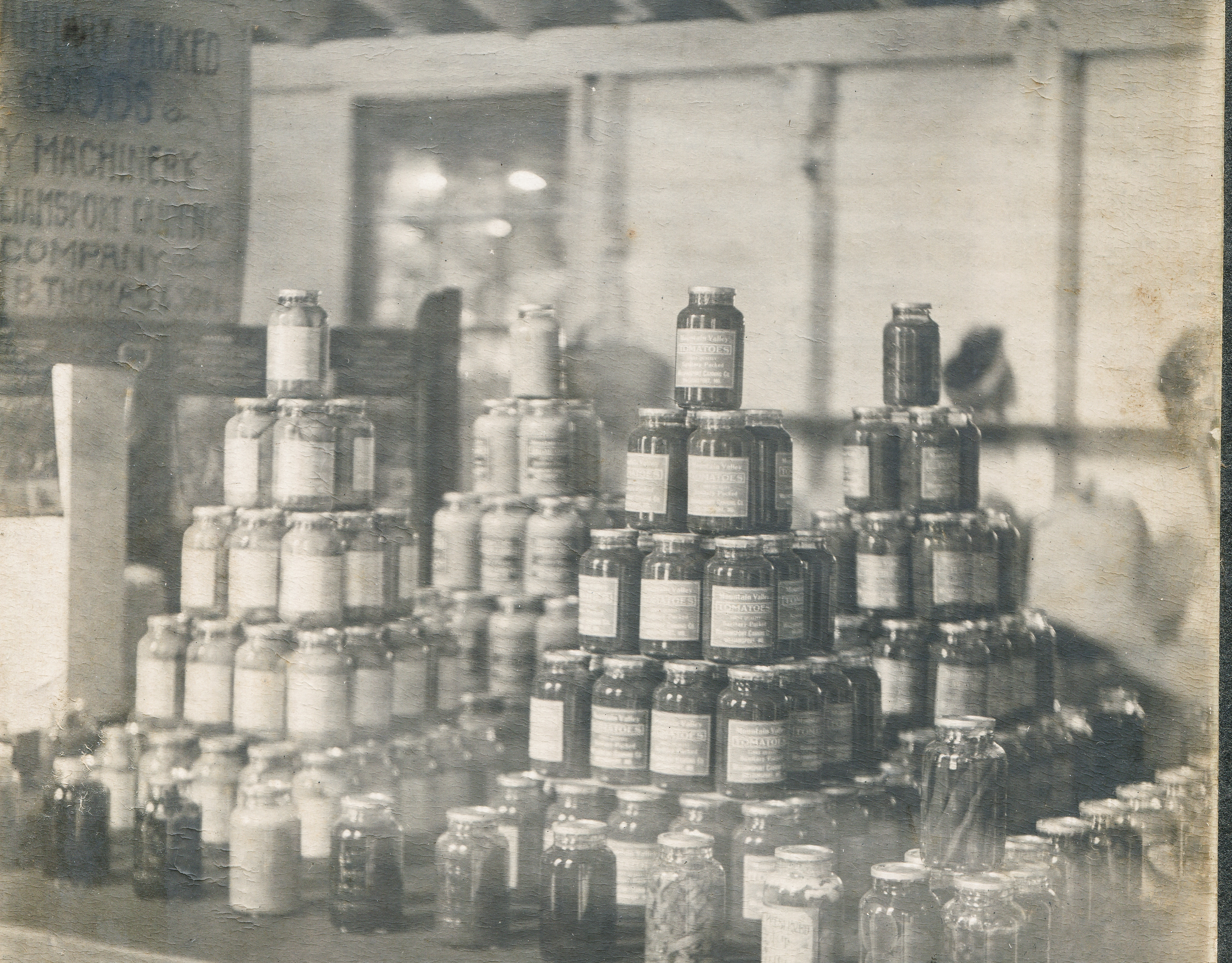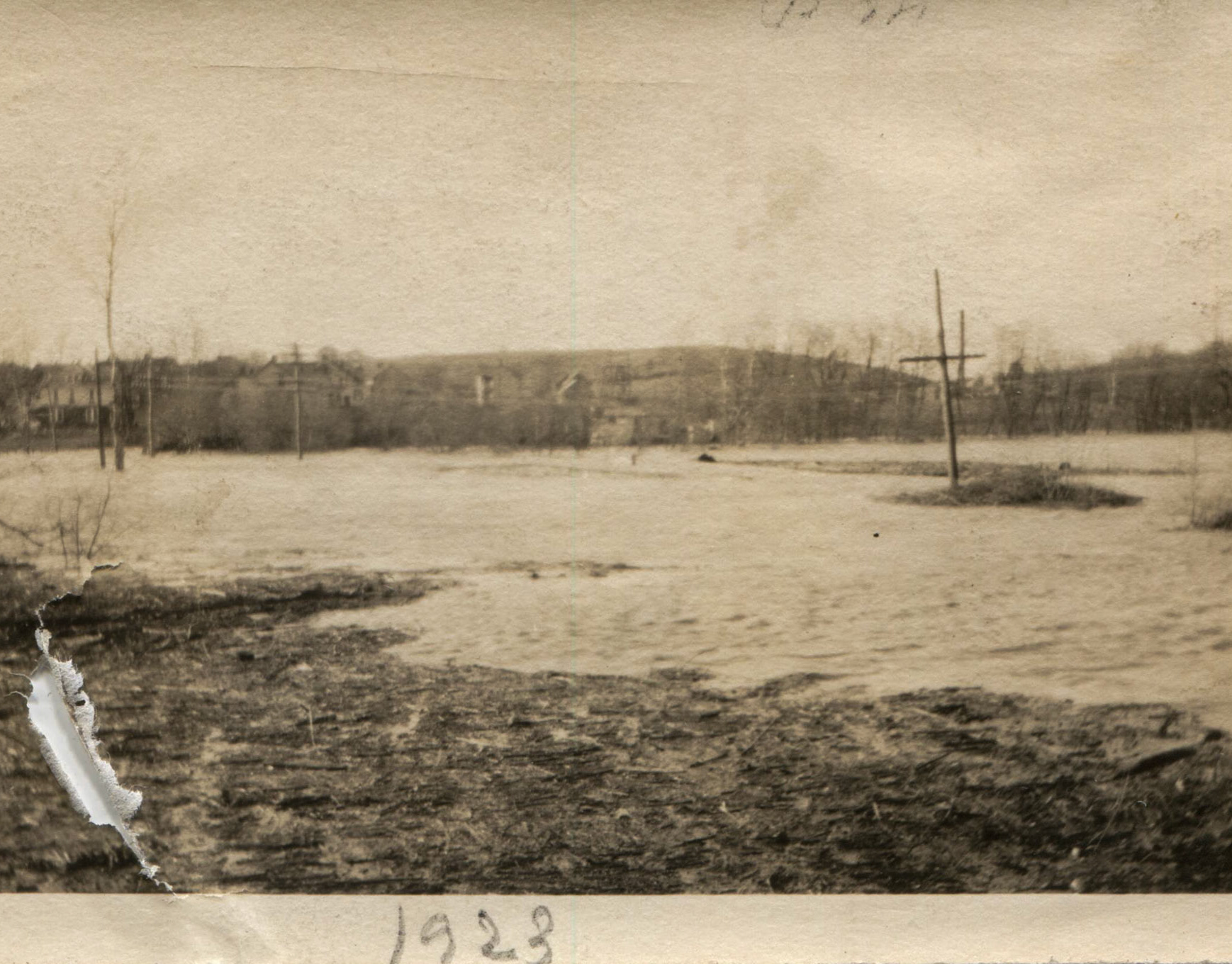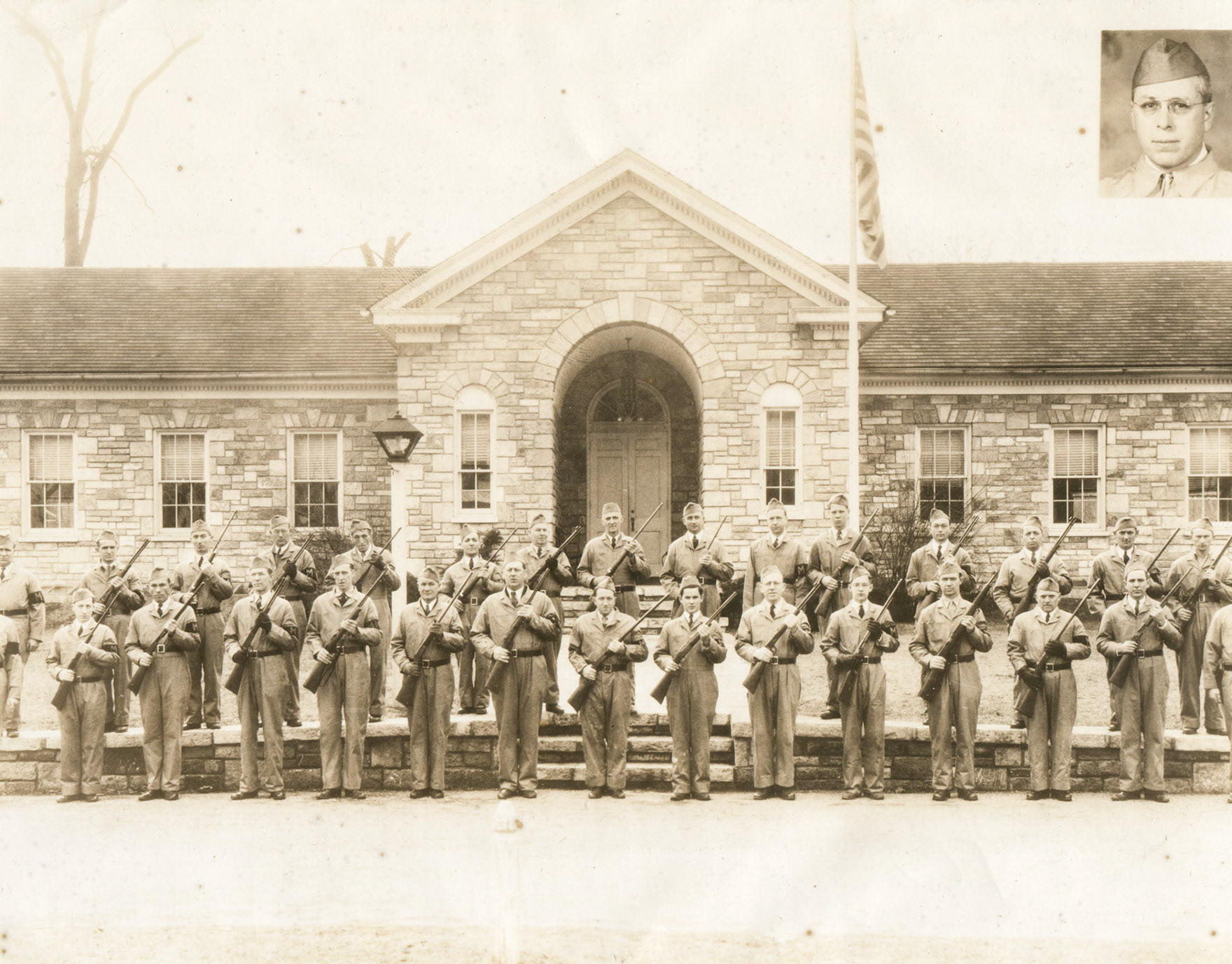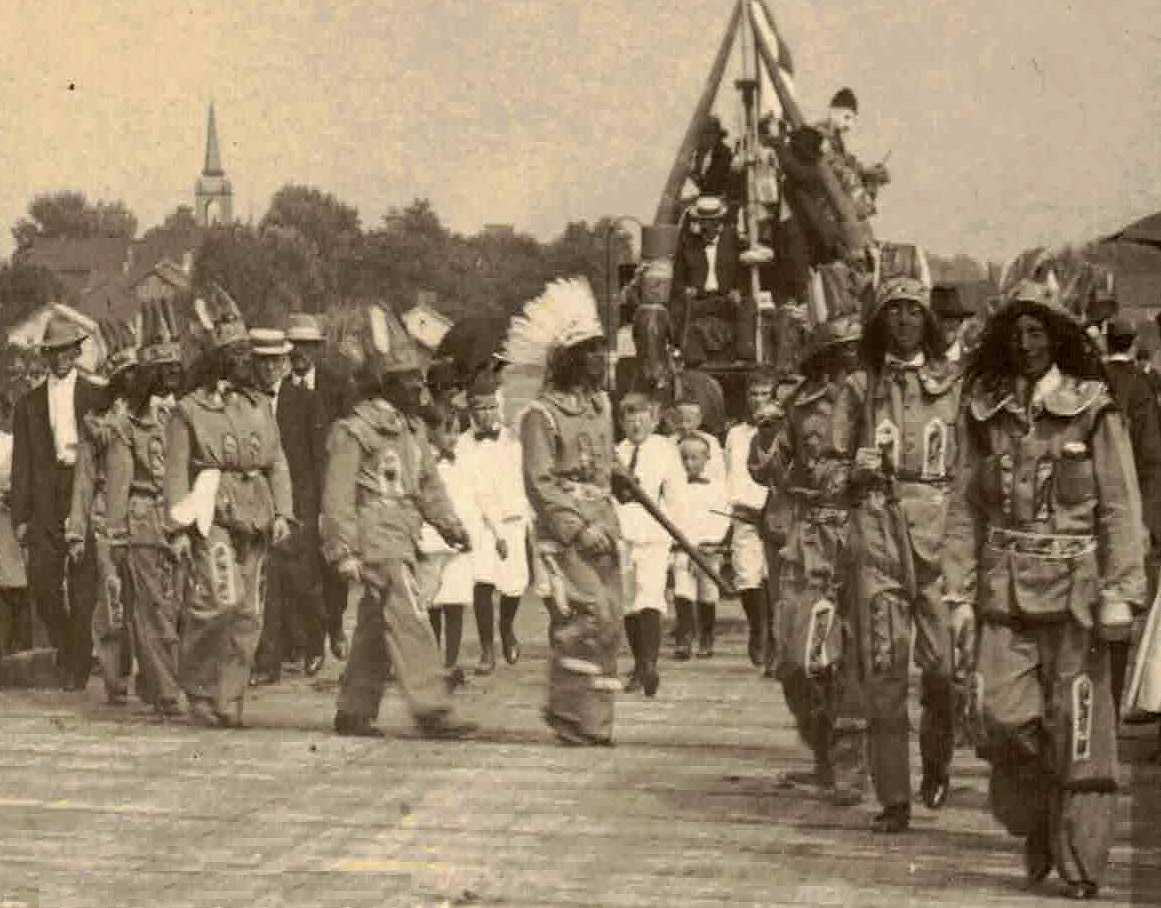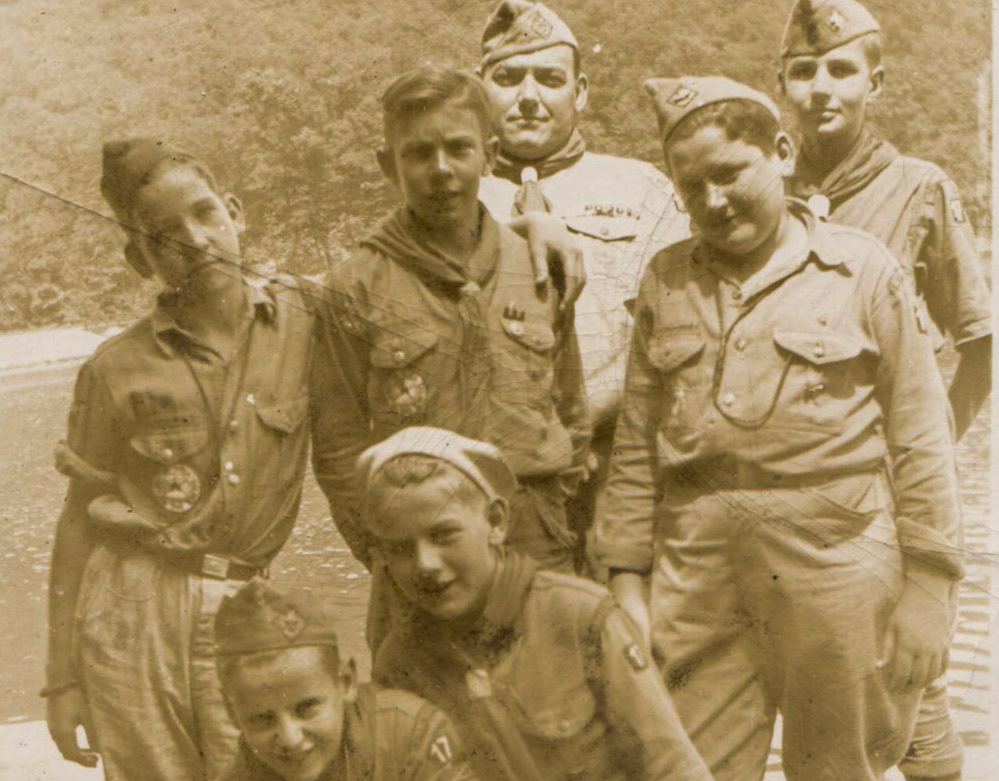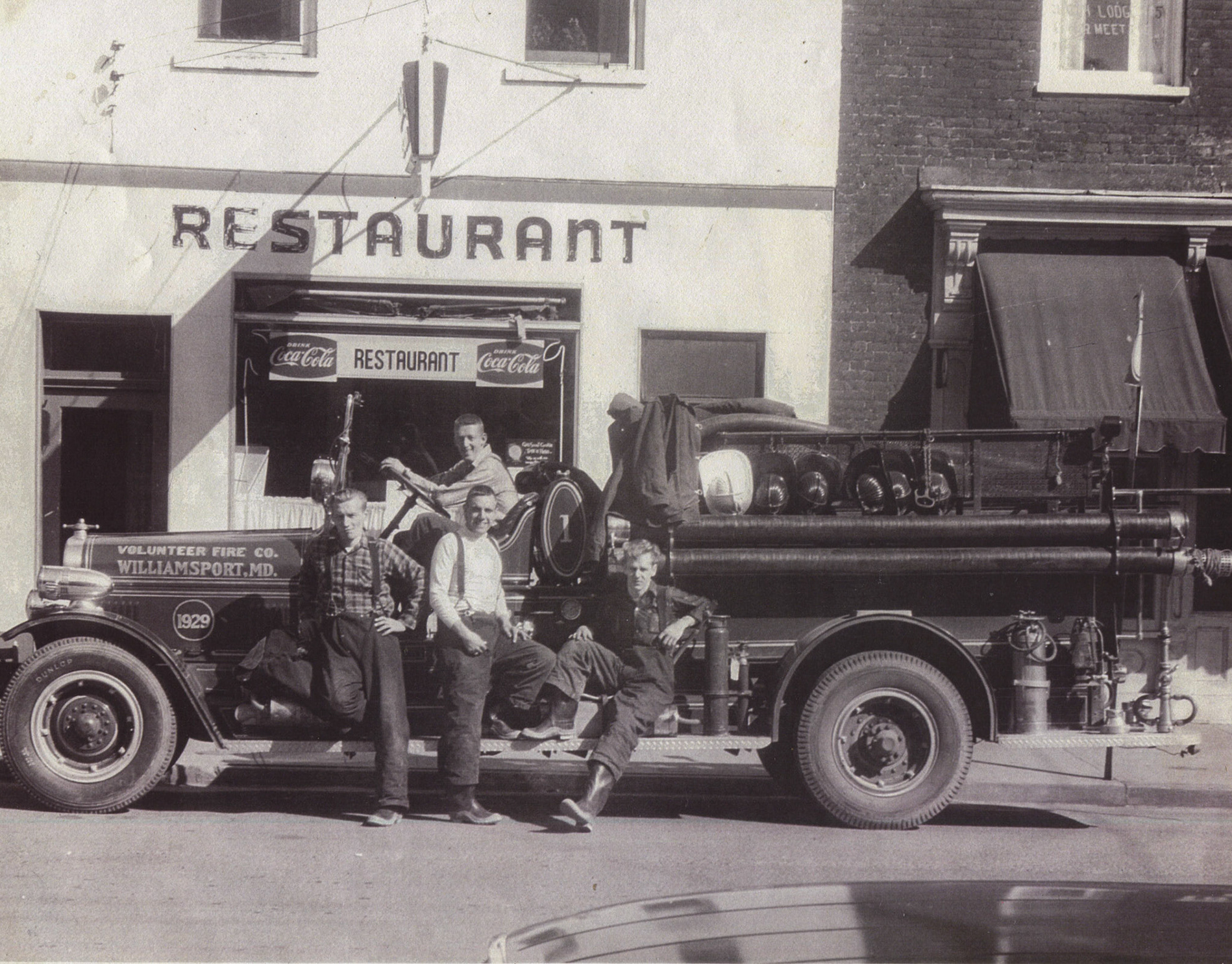From the mid-18th century until August of 1909, the ferry boat at Williamsport was the sole method to cross the Potomac River. That is, unless you were General Lee and had your own army to build a pontoon bridge.
- Click on any photo to enlarge -
The idea of a Potomac River bridge at Williamsport had been bandied about for some 50 years until early 1907 when it came to fruition with the formation of the Washington and Berkeley Bridge Company, a West Virginia corporation.
The corporation organized to build a concrete reinforced bridge nearly 1,600 feet long and 24 feet wide. The bridge was a superstructure for the times, large enough to accommodate wagons, foot traffic, a trolley track, and perhaps, those new "automobiles". There were even rumors of negotiations with the Hagerstown Electric Railway to add railroad tracks over the bridge. Shortly after its formation, the new corporation elected Victor Cushwa of Williamsport as president, vice-president Decatur Hedges of Martinsburg, and secretary-treasurer Dr. W. S. Richardson of Williamsport.
Seeking public and financial support from the locals, the bridge company boasted that this construction project would bring many jobs to the community. In July of 1907, the corporation awarded the construction contract to the Pennsylvania Steel Company with Mason D. Pratt, senior engineer. Pratt was given full authority of the project including surveys, plans, and specifications. In August the bridge company contracted with Elmore & Hamilton of Schenectady, NY, to build the concrete bridge piers.
Both companies brought in their own workmen, supervisors, and laborers, resulting in very few locals being hired.
Elmore & Hamilton began construction of the concrete piers and abutments on September 1, 1908. In a little over three months they had completed the last pier, finishing the 9th of December 1908. The piers were placed about 100 feet apart, with some over sixty feet tall.
The engineers plan called for eighteen concrete piers.
After the concrete cured, the Pennsylvania Steel Company was directed to place two, ten-ton steel girders atop each pier connecting pier-to-pier.
After the main side supports were installed, each section was fitted with seven steel floor-beams, and twelve steel eye-beams, weighing in at an additional sixteen and one-half tons.
On top of all this, a railroad track was laid to accommodate a traveling derrick (weighing in at forty tons) by which the steel was moved from shore to span as each section completed. The derrick was nicknamed "the Traveler."
The Pennsylvania Steel workers were specialized members of the company's "Bridge and Construction” division created twenty years earlier to built bridges, docks, and large buildings. These efficient, skilled workman began laying the steel across the concrete piers at blazing speed. The first steel girder was set on pier one the chilly morning of November 17, 1908. In less than a month the steel workers had installed the steel up to pier nine.
As cold weather set in, the Pennsylvania and New York workmen were highly motivated to finish this job and get home before a hard winter. But as the steel workers rapidly set each section of steel, the drying time the newer concrete piers had to cure was reduced exponentially. Traditionally, concrete requires from three weeks to two months to properly cure. Cold temperatures can reduce drying times, and the weather that November into December was cold, and getting colder. It was estimated that the concrete atop pier ten was poured only one week before the steel workers attempted to fit the pier with steel.
While the supervisors were busy setting up pier eleven, the workmen set the steel on pier ten. The "green" concrete immediately crumbled under the massive weight of the steel. In moments, twenty-ton of steel, the forty-ton derrick named Traveler, and fourteen workmen crashed 60 feet down into a foot of muddy water with a screeching cacophony heard miles away.
PIER COLLAPSES, FOUR KILLED.
Four Injured When 14 Men Fall 60 Feet Into the Potomac River.
Hagerstown, Md., Dec. 16. -- Four men were instantly killed and four others seriously injured by a portion of a concrete pier of the new bridge being erected over the Potomac River at Williamsport collapsing to-day.
The dead:
BICKEL, ROSS H., Dauphin, Penn., aged 22 years and married.
GUSSLER, CHARLES, Duncannon, Penn., 36 years old, married.
MEYERS, JAMES G., Bendersville, Penn., 26 years, married.
STIFF, GEORGE, Roanoke, Va., 26 years, unmarried.
The injured:
CHARLES MOORE, Steelton, Penn., jaw crushed.
JEROME HOLLENBACH, Highspire, Penn., cut about head and body.
JOHN L. NACE, Pennbrook, Penn., both legs crushed and head cut.
FRANK L. BENNING, Buffalo Mills, Penn., hurt about the head and body.
One or two of the injured are in a serious condition and may die.
The dead:
BICKEL, ROSS H., Dauphin, Penn., aged 22 years and married.
GUSSLER, CHARLES, Duncannon, Penn., 36 years old, married.
MEYERS, JAMES G., Bendersville, Penn., 26 years, married.
STIFF, GEORGE, Roanoke, Va., 26 years, unmarried.
The injured:
CHARLES MOORE, Steelton, Penn., jaw crushed.
JEROME HOLLENBACH, Highspire, Penn., cut about head and body.
JOHN L. NACE, Pennbrook, Penn., both legs crushed and head cut.
FRANK L. BENNING, Buffalo Mills, Penn., hurt about the head and body.
One or two of the injured are in a serious condition and may die.
The New York Times, New York 1908-12-17
Three men died instantly, the forth a short time later. Six men were seriously injured. Only one of the injured workmen was local, Alonza Zimmerman of Big Pool, amazingly suffered only minor scrapes and bruises after his 60-foot fall into the mud.
Work on the bridge was halted immediately as the wreckage and cause were sorted out. Naturally, payments also stopped and all sides lawyered up.
Work on the bridge did not resume until May 15, 1909, and was completed on August 8, 1909.
The law suits began in January of 1909:
-Elmore & Hamilton sued the Washington and Berkeley Bridge Company for $16,239 for excavation and concrete work.
-The Pennsylvania Steel Company sued the Washington and Berkeley Bridge Company for unpaid services.
-The families of the deceased and injured sued both Elmore & Hamilton and Pennsylvania Steel for wrongful death.
-Pennsylvania Steel sued Elmore & Hamilton for negligence.
-Pennsylvania Steel then sued the Washington and Berkeley Bridge Company for reimbursement for damages paid as a result of the wrongful death suits.
-And, ironically, Elizabeth V. Ardinger of Williamsport owner of the ferry, sued the Washington and Berkeley Bridge Company for destroying her ferry business.
Legally, it was an interesting case. Regardless that the contract with Pennsylvania Steel gave their engineer complete autonomy over the project, the Washington and Berkeley Bridge Company had independently contracted with the concrete firm, thereby raising questions as to who was responsible. The trials, appeals, and appeals to higher courts, continued for another eleven years.
Hamilton Downs was hired as the first toll collector for the bridge company.
This early postcard shows the railroad track across the bridge used by "Traveler"
Here the derrick tracks have been removed and the bridge opened for business.
Interestingly, the local newspapers reported very little on the bridge collapse and deaths, preferring to focus on the upcoming ceremonies set for August 18, 1909. Other newspapers across the nation, especially in Pennsylvania, carried blow-by-blow reports of the tragedy and trials.
Thousands attended the official opening of the bridge on August 18, 1909. Festivities began with speeches from a podium on Conococheague Street in front of the new Pythian Castle. From there a large parade marched through town and onto the bridge.
The bridge was completed on August 8, 1909. Edward Byron, secretary for the Washington Berkeley Bridge Company was the first to cross the bridge in his automobile.
Despite the lawsuits, and the trolley company abandoning plans to extend tracks to Martinsburg, and the Western Maryland Railway deciding to build their own bridge across the Potomac, the Washington and Berkeley Bridge Company made money. It was the only independently owned bridge company in Maryland, collecting tolls from 1910 until 1954 when the bridge was sold to the State of Maryland. Under the State's ownership, from January 8, 1954, to March 31, 1958, gross revenues from tolls totaled $1,016,270.13.
In March of 1936, heavy snow melt combined with torrential rain along the Blue Ridge resulted in major flooding of the Potomac River.
The Potomac River crested at over 49 feet. Remarkably, the Potomac River bridge was the only Potomac River bridge to survive the flood unscathed. Hundreds of folks paid the dime toll to view the flood waters from the bridge.

